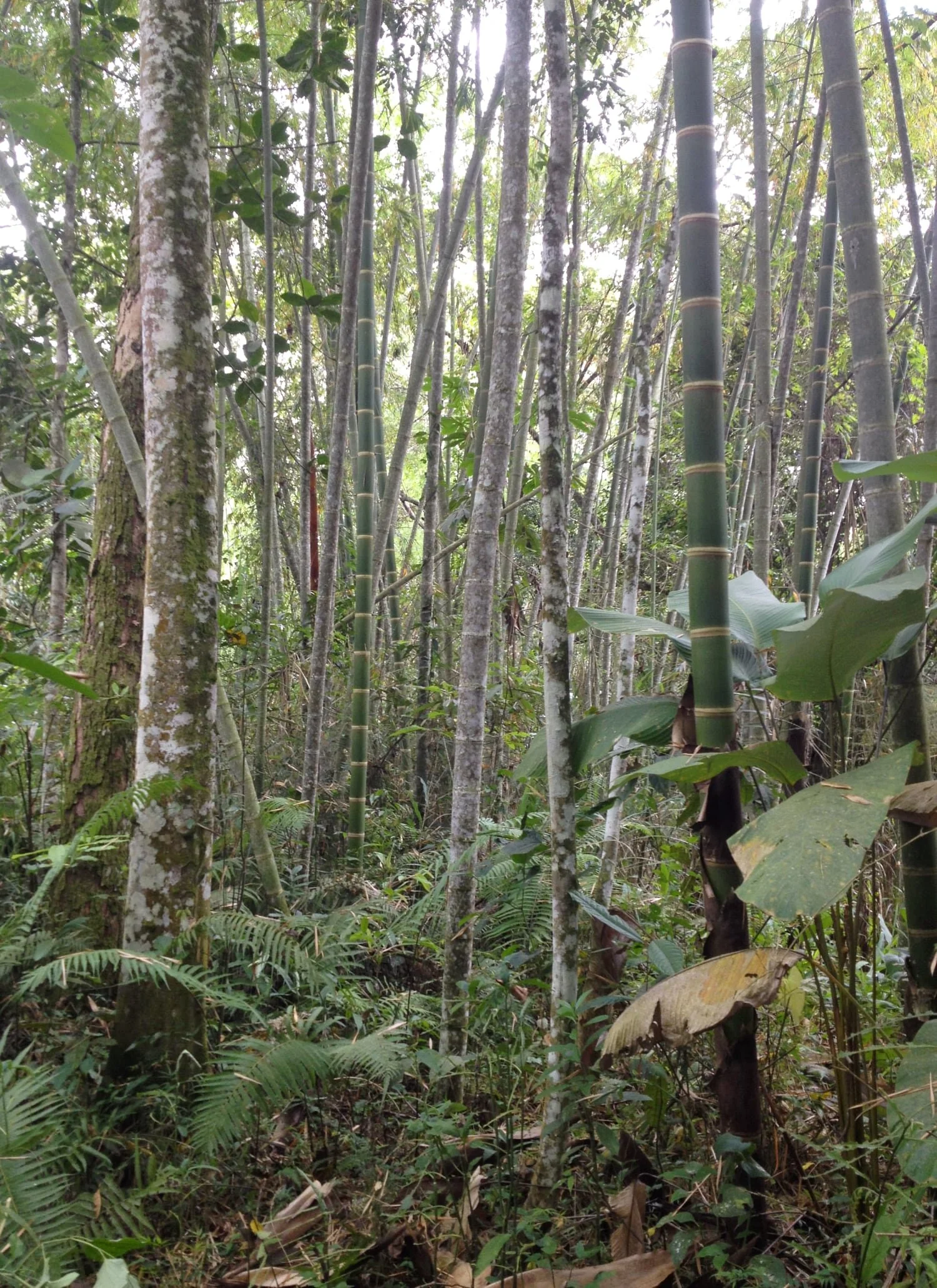Is Bamboo a Tree? Science vs Politics.
Scientifically speaking bamboo is undoubtedly grass, but in terms of legislation, bamboo is often classified as a tree. Although some giant bamboo species may resemble trees due to their large size, it is very important that bamboo is classified correctly to avoid major legal, economic, and environmental implications.
Bamboo vs. Trees: The Scientific Facts!
Bamboo belongs to the Bambusoideae subfamily of the perennial evergreen grass family Poaceae (Gramineae). Of all grasses, bamboo is the largest and the only one that can diversify into a forest.
Although bamboo is a grass, many of the larger woody bamboo species are very tree-like in appearance and are often called "bamboo trees". However, there are a few essential differences between grasses and trees:
Like all grasses, bamboo stems (culms) are essentially hollow. The wall thickness of the culm can vary from thin to nearly solid depending on the species, growth conditions, and part of the culm (base, middle, top).
Bamboos lack a vascular cambium layer and meristem cells in their culms. The vascular cambium beneath the bark causes trees to continually increase in diameter over the years, while the meristem cells make a tree grow taller each year. Bamboos, however, do not increase in diameter or height as they get older. A single bamboo culm reaches its full height and diameter in just one growing season. It then persists for several years, gradually increasing the number of side branches and branchlets, until it dies.
Bamboos don't have a bark, they have protective leaves around the culm (culm sheaths) in their early stages of development.
Trees all have one thing that separates them from the rest of the plant world: one woody stem that lives for many years. Bamboo on the other hand doesn’t have one single stem but many. A bamboo plant continuously produces new perennial culms from its underground root system year after year.
The Importance of Bamboo Being a Tree for Governments
In many countries where large tropical bamboo species occur natively, bamboos are legally considered to be trees and thus fall under the strict regulations of their forest department. This means farmers are often prohibited to harvest and transport bamboo without proper permits (and of course payments).
In some countries where bamboo is considered a tree or timber, it is sometimes auctioned to large and powerful paper and pulp industries at throwaway rates. Forest departments will officially say these controls are needed to protect forests, but in reality, it is a way to control, sell and profit from the bamboo themselves.
In other countries where bamboo is considered a grass, it is often classified as minor forest produce and people have the right to cut and sell bamboo poles or make value-added products.
Legislation in Colombia
In Colombia, it is also prohibited to harvest or transport Guadua Bamboo without a permit. There are many farmers and entrepreneurs who complain because according to this legislation, anyone who has bamboo on their property and wants to harvest it must approach the regional corporation in their area and apply for a harvesting permit. The process of obtaining such a permit often takes months.
In 1974, Colombia was a pioneer in the region on the issue of the protection of its natural resources. At that time, little was know about Guadua’s flowering cycles, its behavior, and its reproduction dynamics. Few people knew of the extremely high renewability of this exceptional resource. There was a false belief that when Guadua flowers it dies, and that is when the species fell within that law.
In Colombia, Guadua is considered a non-timber forest resource. In order for a farmer to harvest his bamboo, he must contract a forest engineer to inspect the bamboo stands and to make a detailed inventory of the present culms. Once the plantation study is presented, certified, and paid for with the local authorities, the farm owner can request a harvesting permit for felling up to 20% of the total amount of culms. Official government agents oversee harvest practices to prevent potential damage to the ecosystem and to make sure it is managed in a sustainable way. As a result, the entire process is slow, expensive, and cumbersome for the property owner.
98% of Guadua stands in Colombia are natural forests and only 2% are planted. The fear is that if people are given the freedom to harvest Guadua, they will damage watersheds and forests where Guadua naturally occurs. In some cases however, the current law has provoked the opposite effect. What is happening is that some farmers are eradicating Guadua from their properties illegally in order to grow other agricultural crops that they can freely manage without the need of expensive permits.
Environmental authorities are aware that excessive protectionism produces illegality and corruption. The protection of trees and forests is of course crucial for the environment and for the future of our planet. But the successful conservation of forests also requires sustainable productive benefits. The challenge is to use bamboo wisely and also plant more of it in deforested areas. Guadua should not be treated as a forest resource but as an agricultural resource. This way more farmers will grow and manage Guadua plantations, which would greatly benefit the environment and the economy.


